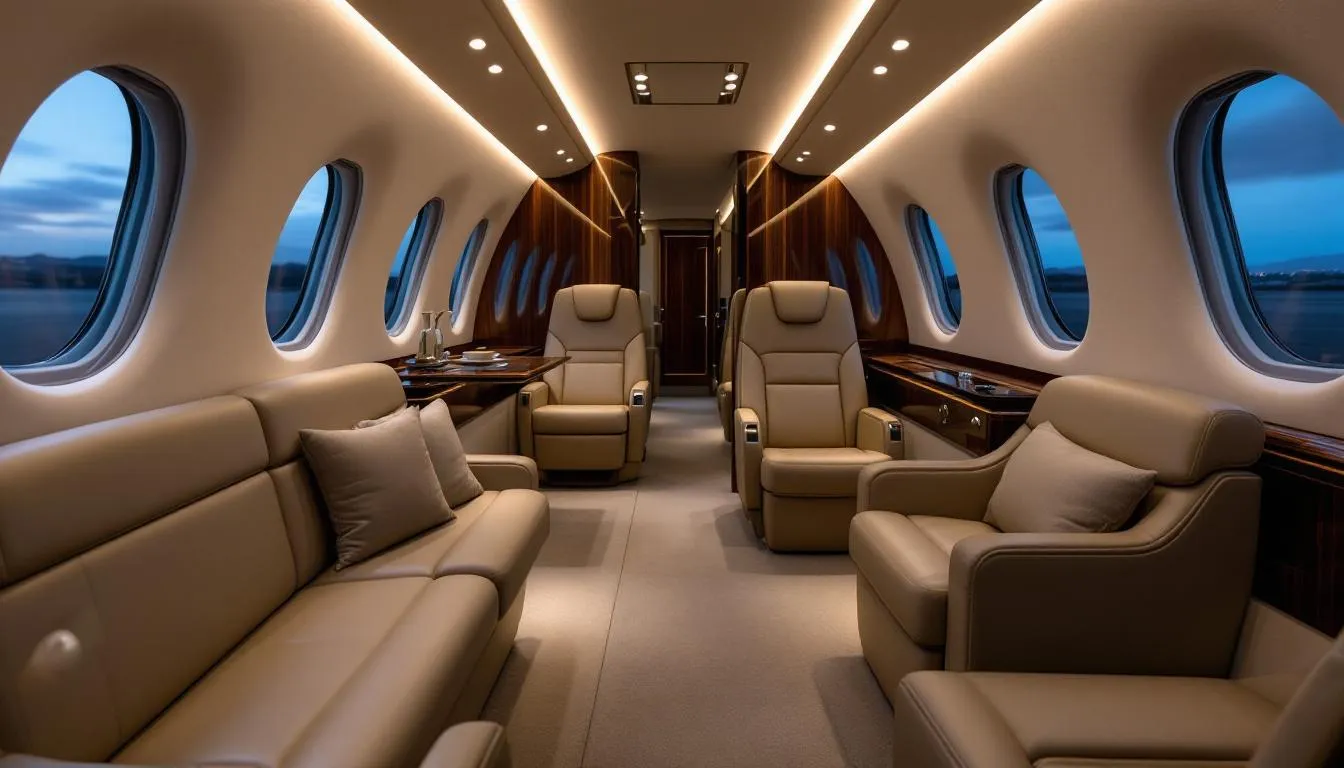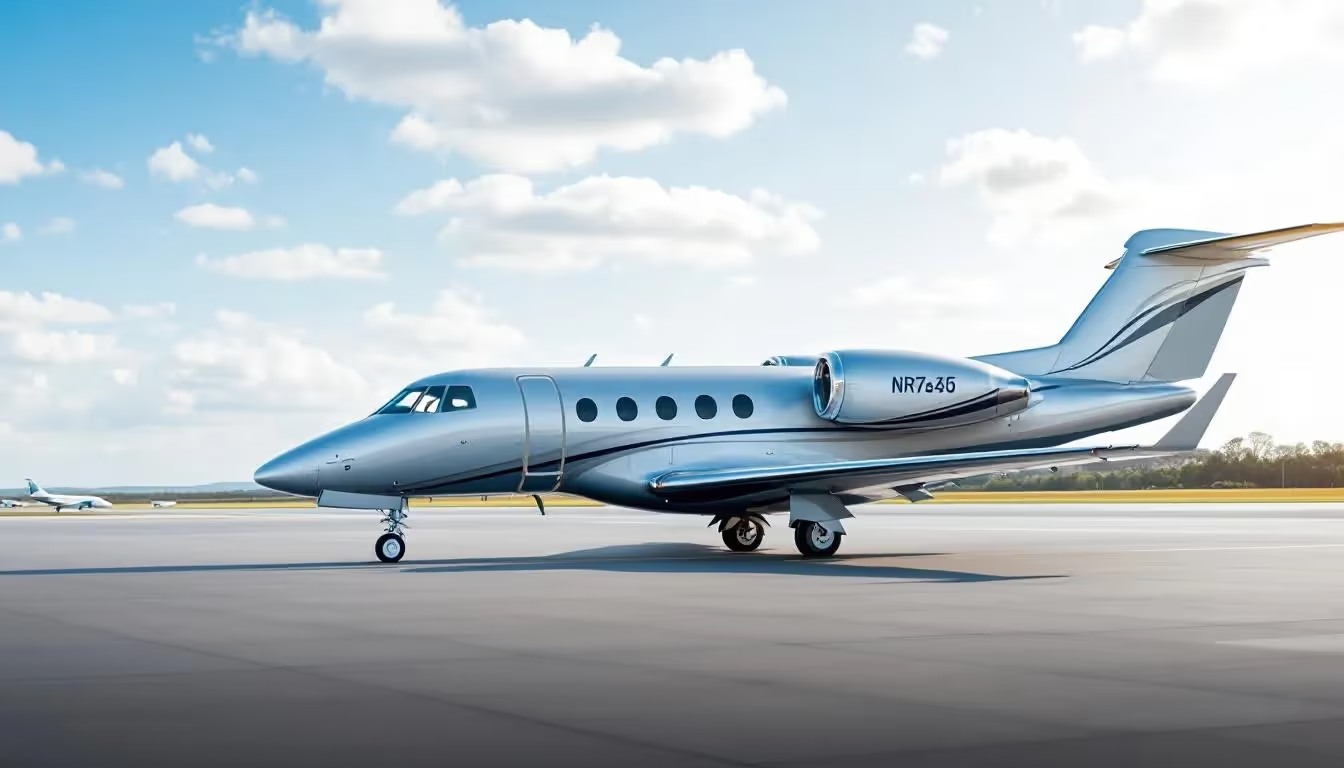Private aviation has long symbolized freedom and efficiency, the ability to travel on your schedule, to your destinations, without the delays or frustrations of commercial air travel. Yet, for many high-net-worth individuals and businesses, full aircraft ownership can seem impractical due to high costs and maintenance responsibilities. That’s where plane share solutions, also known as fractional jet ownership, come into play.
Fractional jet ownership programs allow individuals and organizations to own a share of an aircraft and enjoy the benefits of private flight without the full burden of ownership. This approach combines the comfort and control of private aviation with the economic efficiency of shared costs, creating a modern, intelligent way to fly.
What Is Plane Sharing?
Plane sharing refers to a model where multiple owners share an aircraft, its operational costs, and its availability through a professionally managed program. Each owner purchases a fractional share, granting a specific number of flight hours per year. For example, owning 1/8th of an aircraft typically equates to about 100 flight hours annually, enough for frequent business or leisure travel across North America.
Fractional share sizes can vary, typically ranging from 1/16th shares to half shares, correlating to the number of flight hours allocated. Additionally, platforms like the SMA Network help connect owners with pilots looking to rent aircraft, further enhancing the flexibility and utility of shared ownership. With the SMA Network, you can find a perfect pilot to rent your plane hourly, ensuring optimal use of your investment.
Making Private Aviation Accessible and Efficient
Fractional ownership bridges the gap between chartering a jet and owning one outright. It provides predictable costs, guaranteed availability, and the opportunity to fly with the same aircraft model and service quality every time. Whether traveling for business meetings or weekend escapes, this structure makes private jet ownership more accessible, flexible, and financially efficient.
Benefits of Fractional Ownership
Fractional jet ownership offers more than convenience; it delivers strategic advantages for frequent travelers who value time and reliability.
1. Unlimited Access and Fleet Flexibility
Owners in a fractional program can access a fleet of aircraft, not just one plane. This means you can select the right jet for each trip, whether you need a light jet for a quick regional flight or a long-range jet for transcontinental travel. Some programs even offer unlimited flight hours within your ownership tier, ensuring that flexibility is never compromised.
2. Predictable Costs and Budgeting
A key advantage of fractional ownership is cost transparency. Owners pay a predictable monthly management fee and an hourly rate when they fly. These costs include crew, maintenance, hangar storage, insurance, and more. There are no hidden fees or surprises, allowing owners to plan and manage travel budgets with confidence. Travelers can also take advantage of empty leg flights, often available at steep discounts, saving up to 75% off normal charter prices.
3. The Freedom of a Fleet
Unlike whole aircraft ownership, where one jet must serve all purposes, fractional owners gain access to an entire managed fleet. This ensures consistent availability, even if your specific aircraft is in maintenance. Whether your schedule changes at the last minute or you need to send employees on simultaneous trips, a fleet-based model guarantees convenience.
4. Lower Hourly Rates and Shared Expenses
Because costs are distributed among several owners, hourly rates and management fees remain competitive. You pay only for the time you fly, not for idle time when the plane sits unused. It’s a cost-effective alternative to full ownership, especially for individuals who fly between 50 and 200 hours per year.
5. Ownership Without the Hassle
Fractional owners enjoy all the benefits of owning a private jet, priority scheduling, consistent aircraft type, and professional crew, without the administrative responsibilities. The program provider handles everything: maintenance, staffing, storage, and compliance, so you can focus on your travel goals, not logistics. Aircraft maintenance and expert crew training are typically handled by the fractional ownership company, relieving owners of these responsibilities. For those seeking additional income, leasing your plane to a professional organization can help generate revenue while ensuring proper maintenance.
Understanding Fractional Programs

Fractional ownership isn’t one-size-fits-all. Understanding the different program types helps ensure you choose the right solution for your travel profile.
Types of Fractional Programs
Fractional Jet Ownership: You purchase a legally titled share of a specific aircraft within a managed fleet.
Co-Ownership: Two or more parties jointly own and operate an aircraft independently or under an aircraft management company.
Jet Card Programs: Prepaid hourly flight programs that provide flexibility without ownership commitment.
Each option offers varying degrees of control, flexibility, and long-term financial structure.
The Concept of Undivided Interest
Fractional ownership is based on the undivided interest model, meaning each owner holds an equity share of the aircraft itself, not just flight time. This ensures legal ownership and a proportional share of resale proceeds when the aircraft is sold or replaced.
Professional Pilots and Safety
Fractional programs rely on commercially licensed, highly trained pilots, often sourced from reputable flight schools or major carriers. These professionals uphold the highest standards of safety, operating under FAA Part 91 or Part 135 regulations, depending on program structure. In Europe, regulations have been established to ensure that pilots can legally offer shared flights, generally limited to smaller aircraft.
Program Terms and Conditions
Most programs outline clear monthly management fees, hourly rates, and term durations, typically five years. At the end of the term, owners can renew, sell their share, or upgrade to a different aircraft type.
Aircraft Variety
From light jets like the Phenom 300 to heavy jets such as the Gulfstream G450, fractional programs offer aircraft that fit every mission profile. Light jets offer efficiency for short hops, while midsize and heavy jets provide range and cabin comfort for international travel.
Choosing the Right Program
Selecting a fractional ownership program requires careful consideration of your travel habits, budget, and service expectations.
1. Assess Your Flying Needs
How many hours do you typically fly per year? Are your flights regional or international? These questions determine whether fractional ownership, a jet card, or co-ownership provides the most value.
2. Compare Options
Evaluate fractional ownership, co-ownership, leasing, and whole ownership side by side. Fractional programs are ideal for frequent flyers who want flexibility without full capital investment, while whole ownership suits those flying 300+ hours annually.
3. Verify Provider Reputation
Reputation is everything in aviation. Research the operator’s safety record, fleet maintenance standards, and customer service ratings. Look for ARG/US or Wyvern safety certification and long-standing operational history. Plane sharing through codeshare agreements and joint ownership also provides more travel options and potentially lower fares for passengers, making it an attractive alternative for many.
Codeshare agreements allow multiple airlines to sell tickets for the same flight, with only one airline operating the aircraft, offering passengers greater flexibility and convenience. Marketing airlines can fill seats on flights they do not physically operate, increasing revenue without incurring marketing costs.
4. Review Cost Structure
Request a detailed breakdown of monthly management fees, hourly rates, and residual values. Transparency ensures no surprises and allows accurate comparisons between providers.
5. Prioritize Flexibility and Service
The best fractional programs offer short-notice scheduling, guaranteed aircraft availability, and a responsive owner services team. Exceptional service ensures a seamless experience every time you fly.
Aircraft Options and Co-Ownership
Diverse Aircraft Fleet
Fractional jet ownership gives access to a wide variety of aircraft:
Turboprops (e.g., Pilatus PC-12): ideal for short regional routes.
Light Jets (e.g., Citation CJ3+, Phenom 300): cost-efficient and versatile.
Midsize Jets (e.g., Hawker 900XP): blend of range and comfort.
Heavy Jets (e.g., Gulfstream G450, Challenger 605): perfect for transcontinental and international travel.
Each category delivers unique costs, range, and comfort levels. Your program advisor can help match aircraft type to mission profile.
Advantages of Co-Ownership
Co-ownership arrangements enable partners to split acquisition and operating costs. This model is best for colleagues, friends, or companies with aligned travel patterns. Co-ownership offers: Rental agreements in fractional ownership must establish clear expectations and partnerships among co-owners to ensure successful operations.
Types of Co-Ownership Structures
Partnerships – Joint purchase and self-management of the aircraft.
Joint Ownership – Two or more owners sharing expenses through a management company that coordinates scheduling, maintenance, and billing.
Aircraft Management
An aircraft management company handles scheduling, maintenance, crew, and compliance for co-owners, ensuring the same professional service quality found in fractional programs.
The Role of Commercial Pilots and Flight Schools
Expertise Behind Every Flight
Private aviation operates under the expertise of commercially licensed pilots trained at top-flight schools. Their rigorous preparation includes:
Advanced flight operations and simulator training.
FAA certification for specific aircraft types.
Ongoing recurrent training and safety evaluations.
Flight School Standards
Reputable flight schools emphasize Crew Resource Management (CRM), a critical skill ensuring effective communication and coordination in the cockpit. These standards, adopted from commercial airlines, are what make private aviation as safe and reliable as scheduled carriers.
Career Pathways in Private Aviation
Many commercial pilots transition to fractional ownership and charter companies, where they can operate diverse fleets and provide high-touch service for clients. This ensures every flight is managed by experienced professionals focused on safety, comfort, and discretion.
Costs and Expenses for Aircraft Owners
Understanding the financial framework of aircraft ownership is key to making informed decisions.
Fixed, Variable, and Operating Costs
Fixed Expenses: hangar space, insurance, management fees, pilot salaries.
Variable Expenses: fuel, maintenance, and catering, incurred per flight hour.
Operating Expenses: total costs combining both fixed and variable components. The costs associated with aircraft ownership can include hangar rent, pilot salaries, training costs, and insurance.
Monthly Management Fees
Fractional programs consolidate these costs into a monthly management fee, covering administrative and maintenance services. This model allows owners to plan ahead without financial surprises.
Predictable Budgeting
Fractional ownership converts aviation spending into a fixed-cost model. Owners benefit from predictable outlays, reduced financial risk, and transparent reporting, critical for corporate accounting and personal budgeting alike. The overhead costs of owning an airplane are shared among all owners of each aircraft.
Reducing Costs
Owners can lower costs through:
Co-ownership or partnership structures.
Selecting efficient aircraft types that match mission profiles.
Leveraging fleet programs to minimize repositioning fees and empty legs.
Utilizing platforms like the SMA Network to find partners or renters, reducing ownership or operating costs.
Transparency and Hidden Fees

A Commitment to Transparency
Reputable fractional ownership providers prioritize clear billing and accountability. Owners receive detailed invoices that separate hourly flight charges, fuel surcharges, and maintenance reserves.
No Hidden Fees
The best programs maintain open-book accounting, ensuring every dollar spent is visible and justified. This transparency builds trust and long-term client relationships, essential for high-value investments like private aviation.
Trust and Accountability
Transparency fosters confidence and partnership between owners and management companies. It also underscores a company’s dedication to ethical operation, safety, and customer service, values at the heart of FractionalJetOwnership.com.
Final Thoughts: A Smarter Way to Fly Private
Fractional jet ownership redefines private travel by balancing luxury, flexibility, and fiscal intelligence. Whether you’re a business leader maximizing productivity or a private traveler seeking control over your schedule, plane share solutions provide the best of both worlds: ownership without the complexity.
By participating in a fractional ownership program, you gain:
Predictable costs and transparent billing.
Access to a managed fleet and professional pilots.
Freedom to fly when and where you need.
The prestige and privacy of aircraft ownership, minus the operational burden.
Next Steps
Ready to explore the smarter way to fly private?
Visit FractionalJetOwnership.com to discover how fractional jet ownership can transform your travel experience. Speak with our advisors to compare options, understand costs, and design a flight plan that matches your lifestyle. Passengers can also book flights to cities not directly served by their preferred airline due to codeshare partnerships, simplifying multi-leg journeys and expanding travel possibilities.



























 Sign up with google
Sign up with google Sign up with Apple
Sign up with Apple










